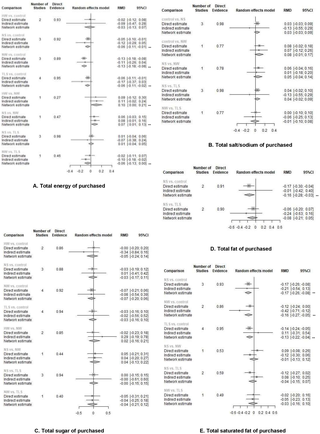Our research had some limitations. First, in comparison with the comparatively great amount of proof on the buying behaviour elicited by FOPLs, the information on meals consumption had been fairly restricted. Our findings prompt that each warning labels and colour-coded labels would scale back the perceived really helpful consumption quantity or frequency of unhealthful merchandise, and warning labels would possibly outperform colour-coded, which may very well be seen as an oblique proof that FOPLs are in a position to change dietary consumption. Nonetheless, the analysis hole between buy and precise consumption of various vitamins stays to be validated by future research, which is essential to tell decision-making on labelling insurance policies. Second, a lot of the research had been laboratory experiments, and, thus, findings primarily point out the instant or short-term impact of colour-coded and warning label interventions. There have been only a few real-world research assessing the impact of necessary labelling insurance policies on real “buy.” Nonetheless, contemplating the extremely managed situation in RCTs and quasi-experimental research, our findings will want additional demonstration by real-world proof to construct the proof for the generalisation of labelling to different components of the world. In our meta-analysis, we discovered that a lot of the current real-world research evaluated TLS and located it successfully elevated the acquisition/number of extra healthful merchandise. For NS, NW, and different HW varieties, extra analysis in real-world settings is required to verify their effectiveness. Third, greater than half of the research included had a excessive threat of bias. Contemplating the character of vitamin labelling intervention research, it was inevitable that contributors would pay attention to their assigned interventions, and, in flip, such consciousness may affect the evaluation of outcomes. Due to this fact, within the sensitivity analyses, we included solely RCTs within the analyses of customers’ behaviour, and the outcomes had been in step with these of the first analyses. Fourth, we solely looked for peer-reviewed articles in 4 of essentially the most generally used databases and the bibliographic references of eligible articles to make sure that our search technique may very well be simply replicated and repeated for the replace. We believed that the majority related research ought to have been coated on this approach, although some related research reported in different databases or within the gray literature could have been missed. Fifth, we didn’t conduct meta-regression to discover the heterogeneity and inconsistency between direct and oblique comparisons, as a result of restricted variety of research for many outcomes. As a substitute, we used a random-effect inconsistency mannequin to accommodate the inconsistency and heterogeneity inside and throughout comparisons. We additionally carried out a collection of subgroup analyses by a spread of impact modifiers based mostly on earlier research, together with age, intercourse, research setting, accessibility of NFt, and product varieties. One other sensitivity evaluation was additionally carried out excluding research utilizing NFt as management setting. The outcomes of the sensitivity analyses didn’t differ a lot from our findings within the major evaluation, which prompt the biases generated from combining 2 management settings (NFt management and no-label management) could be comparatively small. Sixth, we solely thought of power and unfavourable vitamins (e.g., sugar, salt, fats, and saturated fats) which are frequent in varied FOPLs and are thought of the foremost threat elements of NCDs burden [55], however beneficial vitamins (e.g., fibre, protein) are additionally elements of curiosity in lots of FOPLs (e.g., NS and Well being Star Ranking) for his or her helpful well being impact [57,58]. Up to now, few research have evaluated the impact of FOPLs on beneficial vitamins [59], and there was a disagreement within the inclusion of beneficial vitamins in FOPLs as they may have a well being halo impact to merchandise which are excessive in salt, sugar, or fats [60,61]. For these causes, we didn’t summarise the outcomes on unfavourable vitamins on this systematic overview, and additional research are wanted to make clear the professionals and cons of beneficial vitamins on colour-coded and warning labels. Lastly, the numbers of research had been restricted for some comparisons (e.g., just one research supplied direct proof on the comparability between NS and HW for the chance of buying extra healthful merchandise), particularly within the evaluation of outcomes regarding the notion and understanding of FOPLs, and notion and attitudes in the direction of meals choices. Our findings for these secondary outcomes should be validated by extra research sooner or later.
Comments
0 comments
